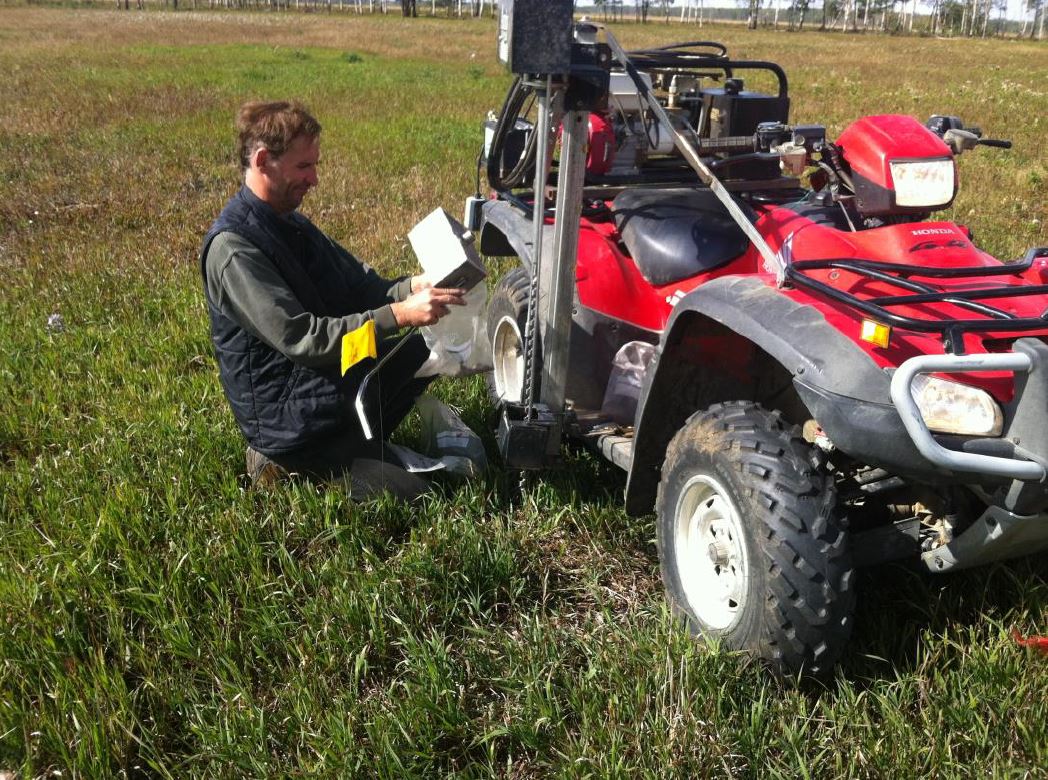| Type | CEC-support Ranch Pilot |
| Organization | Dolen Ranch |
| Country | Canada |
| Region | Spirit River, Alberta |
| Grass Type | Mixed-grass |
| # of head of cattle | 130 |
| Hectares | 129 |
| Language | English |
| Date modified | August 2015 |
The Dolen Ranch is located in the Peace River Region of northwestern Alberta. This region often sees harsh winters and has struggled with inconsistent summer precipitation. Conrad Dolen was born and raised in the area and has been farming the ranch’s “North Fork” for the last ten years. Since the ranch was first established it has grown significantly, now housing 130 commercial beef cows. A half section (320 acres, 129.5 hecatares) of mostly native pasture is the heart of the operation, providing both summer grazing and a primary wintering site. Conrad focuses on extending the fall grazing season by stockpiling native pasture and improving the soil through the use of bale grazing during the winter months. Conrad is actively involved in attending workshops and field days with the Peace Country Beef & Forage Association and is always looking for innovative ways to improve his operation.
Conrad maintains excellent grazing records for all of his pastureland. Cattle numbers and turn-in and -out dates are available for all pastures. He has monitored the performance of his land for a number of years and is passionate about improving his land for future generations. Wintering cattle on pasture, instead of in winter corrals, benefits the land in a number of ways and returns nutrients to the soil that would otherwise be lost. However, wintering cattle on pastures in the Peace Country poses a number of challenges, including providing adequate shelter from the elements. Many pastures in the area, including Conrad’s, include wooded areas where cattle can seek shelter from the wind. However, over time, areas where the cattle frequently congregate become overloaded with nitrogen and other nutrients. In Conrad’s case this has led to loss of trees and likely of some native grass species.
The Wintering Site Assessment and Design Tool, created by Agriculture and Agri-Food Canada (AAFC), Agriculture and Rural Development (ARD) and Agricultural Research and Extension Council of Alberta (ARECA), was used to evaluate alternative locations within the native pastures to feed cattle over the winter. This project enhanced nutrient distribution and reduced the stress on areas where cattle traditionally congregated to seek shelter. Providing portable windbreaks allowed Conrad’s cattle to remain on the pasture throughout the winter to graze stockpiled forage or bale graze while limiting the negative effects their presence had on the native pasture and trees.
Drought across the region during the summer months did not allow Conrad to plan for any grazing of stockpiled forage on his native grasslands/bush areas. The native pasture within this project (which includes some bush areas) was grazed once over the summer and Conrad was unable to utilize it as stockpiled forage in the fall as it was a very dry summer across most of the Peace Country. Wintering plans were altered to bale graze on areas that are seeded to tame pasture, located nearby to the native pasture (Conrad did not plan to do any bale grazing on the native pasture). A target area without natural shelter was selected as a wintering site. The bales were placed throughout the field, with a goal of increasing nutrient distribution utilizing the Wintering Site Assessment and Design Tool (WSADT). Soil samples were taken in early September at various points across the chosen feeding area as a benchmark for monitoring soil changes. Samples of the available forage were taken and analyzed for nutrient content. Historical knowledge of the site and forage availability were noted. Cows were moved onto the site in January 2015 and were monitored to ensure they maintained good body condition. They remained at the site until late April 2015. The portable windbreaks were moved periodically during February through April to distribute manure. Cattle will not re-enter the area until late summer of 2015. Soil samples were collected in the fall and growth of the forage species were monitored.
